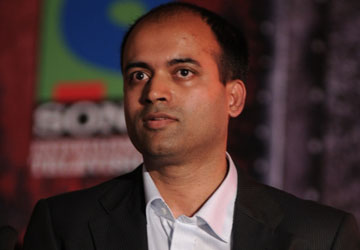Sony ties up with top producers for content during weekdays
Sucheta Dalal
16 Dec 2009
 Pallabika Ganguly (ML): What is Sony doing to grow its viewership category during the week?
Pallabika Ganguly (ML): What is Sony doing to grow its viewership category during the week?
Ajit Thakur (AT): The weekend is our strength. ‘CID’ and ‘Aahat’ are our highest rated shows in the fiction category during weekends. Under the non-fiction category, ‘Dance Premier League’ and ‘Comedy Circus’ are doing well. That’s the part which works for us and we continue to consolidate that.
The problem for us is that every channel has 3+ television rating point (TRP) or 4+ TRP shows during weekdays, but from Monday to Thursday we do not have a single 1+ TRP show. We are working towards cracking the weekdays by telecasting good fiction shows. We are tying up with some top producers like Hats Off Production, Sphere Origin and DJ’s Creative Unit to create soaps and dramas. We are trying to create more contemporary stories and we will concentrate on coming up with hardcore fiction content during weekdays. We are very clear that we have to win this battle to become a number one channel overall and not only during weekends.
ML: What kind of content are you concentrating on? Which are the other genres you are looking at?
AT: We are not looking at over-the-top dramas. We want to do shows which are good dramas with realistic characters. We are looking at the thriller and comedy genres also. We have just launched the horror genre of shows, which has worked very well for us.
ML: Even after the revamp, Sony is still not among the top three in the viewership list. Why has this happened?
AT: During the revamp, a few things did not work out, but in the past five months, we have made a lot of progress. But Sony’s gross rating points (GRPs) have gone up from 80 to 190. We have doubled in the past five months and no other channel has grown so much.
ML: How do you see the content industry growing over the years?
AT: The production industry will grow with many more channels coming into the market. Most of the original content is telecast between 8pm to 11pm and some (shows) are telecast during the afternoon. There will be growth—with more channels coming up, and the number of hours of original programming will also go up. In the current structure of the broadcasting business, there is no value model for production houses, so you need to cushion yourself from the cyclical downturns that every creative content company goes through.
ML: Do you feel that more and more film production houses are diversifying into the television content business? Is this the latest trend in the industry?
AT: We are doing our biggest deal with Yash Raj Films (YRF) to produce exclusive fiction and non-fiction content. YRF will be producing five shows for us. Good content works in every platform and if you have proven credentials in films, you can obviously get into television content.
ML: How is Colors, which is just a two-year-old entertainment channel, so successful in its business?
AT: Colors has put in a lot of money into distribution to make sure that it has enough reach. It produced more realistic content which connected with the audience. It used a very good business strategy backed by a good programming strategy.
ML: How much do you expect television producers to grow over the next two years as a number of new producers are stepping into the industry?
AT: I expect television production houses to grow between by 15%-20%. I foresee this because there is normal escalation happening by 7%, and content is becoming costlier day by day. More and more slots are opening up; this is attracting more new producers into the industry. Some of them will collapse and the rest—the really creative ones—will remain in the business and will definitely grow by 15%-20%.
— Pallabika Ganguly
— Pallabika Ganguly